#Direct Reference
Explore tagged Tumblr posts
Text
Theories of Direct Reference
Theories of direct reference focus on how certain linguistic expressions (such as proper names, demonstratives, and indexicals) directly refer to objects or entities in the world without the need for intervening descriptive content. Here are some of the main theories and approaches within direct reference philosophy:
1. Causal Theory of Reference
Key Proponent: Saul Kripke (with contributions from Hilary Putnam and others).
Summary: The causal theory of reference holds that a name refers to an object by virtue of a causal chain of communication that links the name to the object. The chain begins when the name is originally assigned to an object, and subsequent speakers refer to that object through this causal link, even if they don't possess full descriptive knowledge of the object.
Example: The name "Aristotle" refers to the historical figure Aristotle because there is a causal history connecting the use of the name to the actual person, regardless of whether the speaker knows all details about Aristotle.
Key Features:
Rigid Designators: A name refers to the same object in all possible worlds where that object exists.
No Descriptive Content: Reference is direct and not mediated by a description or mental representation.
2. Direct Reference Theory of Names
Key Proponent: Ruth Barcan Marcus.
Summary: Ruth Barcan Marcus advocated for a direct reference theory where proper names refer directly to objects, not through descriptive meanings but as "tags" or labels that identify the object. This theory refutes the descriptive view of names put forth by philosophers like Bertrand Russell, who argued that names function as shorthand for descriptions.
Example: "Venus" refers to the planet regardless of any specific description (e.g., "the brightest planet visible in the sky"). The name refers to the object directly.
Key Features:
Rigid Reference: Like Kripke's rigid designators, names refer to the same object across all possible worlds.
Meaning vs. Reference: The meaning of a name is not determined by descriptive content but by its reference to an actual object.
3. Kripke’s Rigid Designator Theory
Key Proponent: Saul Kripke.
Summary: Kripke introduced the concept of rigid designators, arguing that proper names are rigid because they refer to the same object in every possible world where the object exists. His famous "modal argument" suggested that names must refer directly because they maintain their reference even when considering counterfactual or hypothetical situations.
Example: In every possible world where Aristotle exists, the name "Aristotle" refers to the same person, even if in that world he may not have been a philosopher.
Key Features:
Distinction Between Necessity and Contingency: Kripke distinguished between necessary and contingent truths, using direct reference theory to argue that some facts (like "Aristotle is Aristotle") are necessarily true, while others (like "Aristotle was a philosopher") are contingently true.
4. Millianism
Key Proponent: John Stuart Mill (as an originator).
Summary: In Mill’s theory, a proper name has no meaning or descriptive content but serves only to refer to the object it names. This position, called Millianism, views proper names as "denotative" terms that only serve the function of pointing to their referent.
Example: The name "Homer" refers directly to a specific individual (if such a person existed) and does not carry any additional meaning or descriptive properties.
Key Features:
No Connotation: Names are devoid of descriptive meaning and refer purely to their objects.
Contrast with Descriptive Theories: This approach contrasts with theories that associate names with sets of descriptions.
5. Putnam’s Twin Earth Thought Experiment
Key Proponent: Hilary Putnam.
Summary: In his famous "Twin Earth" thought experiment, Putnam argued that the meaning of certain terms (such as natural kind terms like "water") is determined not by descriptive content but by external factors in the world. This supports the view that reference is a matter of causal-historical connections rather than internal mental descriptions.
Example: On Twin Earth, where "water" looks like water but is chemically different (XYZ instead of H2O), the word "water" on Earth refers directly to H2O, not to XYZ, even if it has the same superficial properties.
Key Features:
Semantic Externalism: The meaning and reference of terms depend on the external world and the environment, not just the mental state of the speaker.
Natural Kinds: Terms like "water" refer directly to the kind in question, based on their real essence, even if speakers are not aware of all its properties.
6. Kaplan’s Theory of Indexicals and Demonstratives
Key Proponent: David Kaplan.
Summary: Kaplan extended direct reference theory to indexicals (e.g., "I", "now", "here") and demonstratives (e.g., "this", "that"). Kaplan argued that these terms directly refer to objects or individuals in the context of utterance, without needing descriptive content.
Example: The word "I" refers directly to the person speaking, without the need for a description of who they are.
Key Features:
Context-Sensitivity: The reference of indexicals and demonstratives depends on the context of utterance, but their reference is direct and does not rely on descriptions.
Character and Content: Kaplan introduced a distinction between the character of a term (a rule that determines reference based on context) and the content (the actual referent).
7. Donnellan’s Referential/Attributive Distinction
Key Proponent: Keith Donnellan.
Summary: Donnellan distinguished between the referential and attributive uses of descriptions. In the referential use, a speaker uses a description to directly refer to a specific object (even if the description is incorrect). In the attributive use, the description is used to identify whatever object fits the description.
Example: If someone says, "The man drinking a martini is my friend," they might refer to a specific individual (referential use), even if the man isn’t actually drinking a martini. In this case, the speaker’s intention determines reference, not the truth of the description.
Key Features:
Referential Use: In the referential use, the description is used as a tool to refer directly to an object, even if the description is inaccurate.
Attributive Use: In the attributive use, the description serves to identify an object that fits the description.
Theories of direct reference emphasize that certain terms (especially names, indexicals, and demonstratives) refer directly to objects in the world without the mediation of descriptive content. These theories challenge earlier views that tied reference to descriptions or mental representations, offering a view in which context, causal chains, and external factors play key roles in determining reference. Major contributions come from Kripke's rigid designators, Kaplan's theory of indexicals, and Putnam's causal theory of natural kind terms.
#philosophy#epistemology#knowledge#learning#chatgpt#education#ontology#metaphysics#Direct Reference#Causal Theory of Reference#Rigid Designators#Millianism#Kripke#Kaplan#Putnam#Referential Theory#Indexicals and Demonstratives#Natural Kind Terms
2 notes
·
View notes
Text
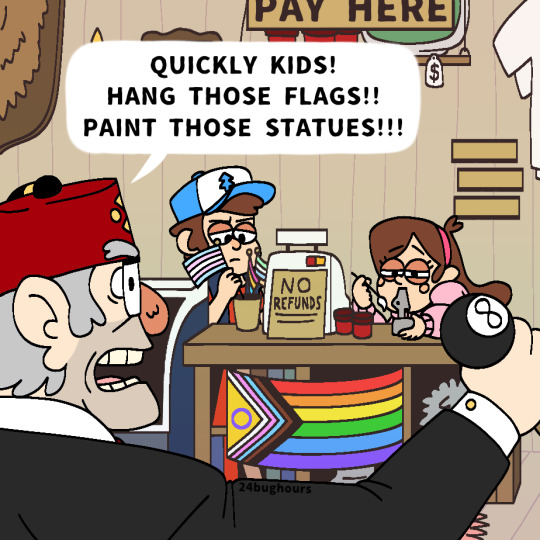

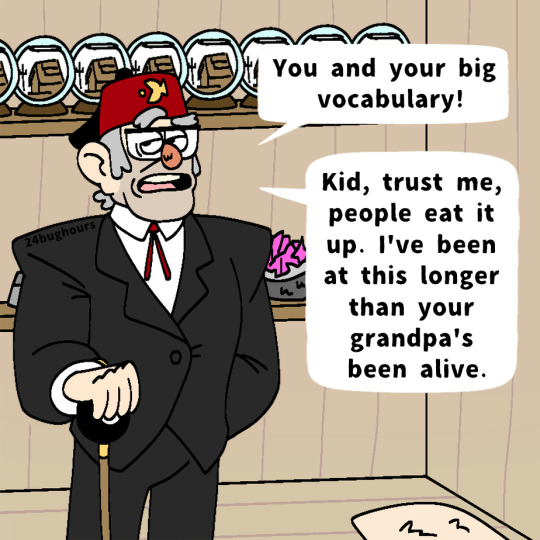

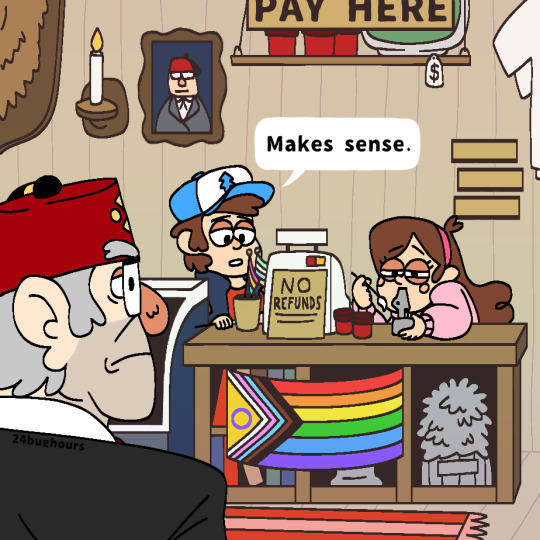
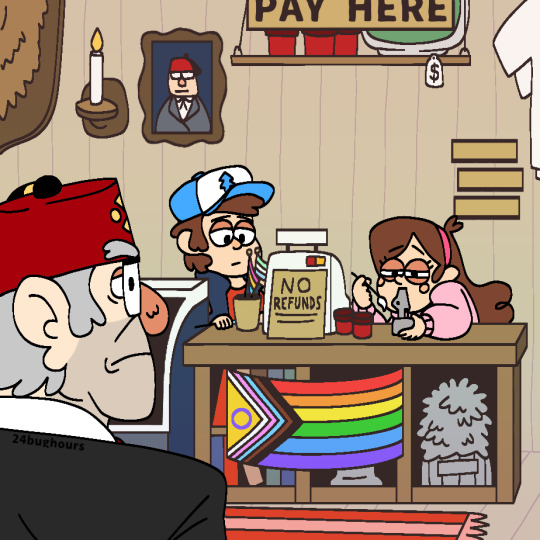


Happy pride, have a half formed idea i had at 2 am
#the lack of direction in this comic might be obvious. but thats okay#unlabeled stan headcanon is gonna be making reappearances this pride (if i escape art block)#and im gonna be really gay abt ford which is cool#gravity falls#gravity falls comic#stan pines#dipper pines#mabel pines#happy pride everyone#yes the last panel is a sailor moon reference
9K notes
·
View notes
Text



So much for flirting your way out. Eh, Frisk?
#twin runes#twin runes mini#undertale#deltarune#kris dreemurr#frisk#Just a little something up outside of the script I thought would be funny#also gives us a little sneak peek at the darkner that just kidnapped the two#looks like she's not much for flirting#a very no-nonsense attitude#also that is NOT a typo in Frisk's flirting attempt#that is VERY intentional#it's a direct reference to one of the dialog choices during the roleplay date with alphys
3K notes
·
View notes
Text

Act I ~ The Prince
A tapestry for Let No One Sleep by @azalawa-scroggs on ao3
#wrightworth#phoenix wright#miles edgeworth#nmbb24#happy nrmt big bang!!! there are two more of these…..#but you’ll have to wait for them#fan art#aa#ace attorney#dick gumshoe#maya fey#manfred von karma#…bro is creeping…#wHEEWWWW ok took me a bazillion years to catch up with my day but HERE ARE MY THOUGHTS ON THIS ONE:#the border is intended to be read in counter clockwise direction#so: top -> left -> bottom -> right#and YES the sun and the moon are intentionally associated with the attorney's and prosecutor's badges respectively#phoenix and miles are our sun and moon throughout this story so be sure to look for that in the fic too!!#this style was very experimental for me but i wanted it to mimic the feeling of a tapestry hence me referring to it that way#i WISH this was fabric that would be sick as fuck#i will eventually share a proper breakdown of the thoughts and intentions behind everything but for now...#im gonna miss Phoenix’s cloak bc im obsessed with the design actually. wish that thing was real too#miles is my cunty little bitchboy in this wearing his thousand pound fur coat and the suitor stompy boots#if you thought that was a rug and went Oh. ...that was on purpose :^)))))#rendevok#id in alt text
4K notes
·
View notes
Text
Dungeon Meshi Information Sources
Dungeon Meshi has several worldbuilding details and extra comics in different publications and I think they get pretty hard to keep track of so I wanted to make a guide and explain what is what for people that maybe want to look into it themselves!
The Main Information sources are:
Daydream Hour 2-5: Sketch compilations and extra comics by Ryoko Kui with commentary, which can be found on EH Scans blog translated, and also in mangadex in between the manga chapters (The first daydream hour isn't dungeon meshi related)
The Complete Daydream Hour: Or more specifically "Ryoko Kui Doodle Book Daydream Hour" Released in january 2024 it still hasn't been fully translated into english. This version compiles extras and sketches from daydream hour 1-5 along with new content. Some of the exclusive comics have been translated and can be found on reddit and bato.to but the full thing is yet to be translated. (Update: Daydream Hour is gonna be realeased in english at the end of May 2025! You can pre-order on the Yen Press website)
Delicious in Dungeon World Guide: The Adventurer's Bible (2021): A guide by Ryoko Kui that compiles information about the characters, monsters and the world. An official english version is available. It was released in february 2021 and has information pertinent for up to chapter 71 from the manga. It contains extra comics for all the main characters and for all the human/demi human races. The extras that talk about side character's backstories are from this book and the characters section has been translated by EH Scans (Also on mangadex)
Delicious in Dungeon World Guide: Adventurer's Bible Complete Edition (2024): Released in february 2024 and still untranslated, this version of the Adventurer's Bible has information updated for the end of the manga, there's even more extras and lots of comics about post-canon. Some of them are being translated and posted into reddit but I haven't seen them anywhere else. The raw is available on bato.to (edit: Yen Press has announced the new AB but still no dates)
Manga and Ryoko Kui's Blog: Some of it are from the manga itself, like Monster Tidbits and other Harta Magazine Extras (Where dungeon meshi is published) and also from the author's own personal blog. Lots of the drawings in her blog were deleted with the publishing of the complete daydream hour but you can still see what was unpublished using the wayback machine.
Blu-ray: The blurays is where the "what if" extra comics come from, the covers also have original art by Ryoko Kui and some other extra illustrations you can see on this tag.
I hope this helps somehow! It was pretty confusing for myself when I first started looking for more extras after finishing the manga.
The things I post here are all based on one of these and I try to put in the tags what the source is!
#Dungeon Meshi#For referencing#delicious in dungeon#Ryoko Kui#adventurers bible#daydream hour#dungeon meshi reference#I'm not sure how bad sharing direct links on a post would be but if you need links for anything just send me an ask off-anon#I think with the info here you can find most of these online tho
1K notes
·
View notes
Text




they didn't practice motorcycle safety .. paid the ultimate price (ego)
inspired by @quiverymango 's photo of the sonic movie toys (below cut)

#secondary inspo is i too just accidentally bought a motorcycle jacket from the thrift (which is the direct reference for his jacket)#ignore the bad dialouge i wrote it on krita which has such a crappy text feature i am not editing that#sonadow#shadow the hedgehog#sonic the hedgehog#sonic movie 3#sth#id in alt text#my art
648 notes
·
View notes
Text
☆ But The Night, He Calls Me — Bruce "Batman" Wayne x GN Civilian!Reader Fic ☆
Genre: Fluff || they/them pronouns for reader || No warnings needed

──────.𖥔 ݁ ˖˗ˏˋ ★ ˎˊ˗.𖥔 ݁ ˖ ──────
It was hard to imagine a time where anything noteworthy in Gotham didn't happen during a dark and stormy night. The city was a pretty big pull for raincoulds, low hanging fog, and a general morose look. But above all else, it was your home, though you didn't prefer to walk out at night these days. With the notoriously shoddy work of the GCPD and crime rates almost triple as high compared to the neighboring cities, you didn't exactly feel the wet concrete and dark alley corners beckoning you anytime soon.
The roof, however, was a different matter. Your roof— or, well, the roof to the apartment complex you lived at— became a frequent spot to the one man who could ever make a dent in Gotham City crime. The very same man you could see perched on the edge of the parapet right now. You approached slowly, taking careful steps as to not make a sound. After painfully long moments of inching, you were almost close enough to reach out. You shuffled just a bit more, preparing to make yourself known-
"Go back inside" the dark figure cut in, low gravelly voice clear and familiar. You sighed deeply, giving up and moving to step up to the vigilante's side "How do you always do that?". "I'm a detective, it's my job" the Batman said flatly. You leaned against the parapet he was standing atop "It's uncanny is what it is. After all these months you'd think I'd be able to get the drop on you at least once". "Villains who have been chasing me since the beginning of my career haven't managed it either, don't be too discouraged" Batman replied.
You chuckled a little, looking over the edge of the roof. The crime fighter's dry humor was a reason the two of you got along so well. After meeting by chance a few times, it became a more regular occurrence to meet up like this. Sometimes you'd get to see him spring into action, or maybe even return from a fight. But tonight, it seems, was uneventful. "Slow day?" You asked. "There's never a slow day in Gotham," Batman responded "You just need to know where to find the action". You couldn't help but snort a little at the claim "Okay, tough guy, so why haven't you set off yet?". "There's no point to a stakeout if you jump in before the crook" Batman said, and you gave a thoughtful nod in reply.
"You should really go back inside" the caped crusader spoke up "It's late. You've got work, I'm sure". "Got the day off, actually, detective" You responded "And I can't sleep knowing there's a bat on my roof". That got a faint hum from the dark knight, the closest you got to an amused reaction from him. The wind picked up from the just-passed storm, bringing a chill that bit your cheeks and clung to your clothes in one large wave. You couldn't help but shiver, tugging your jacket tighter around your pajamas.
Batman kept his gaze on the streets below, watching as puddles rippled with the last few drops from the sky and lamps flickered from lack of care. He was in tune with every foot of concrete road, attuned to any and every movement. The only thing that pulled his attention was when feeling his long billowing cape being tugged. His head looked over, seeing you wrapping the inky black fabric around your shoulders. "What- what are you doing" Batman asked, mildly confused. "It's not really fair that you're the only one that gets to wrap up in this thing" you said, scooting closer to him for more coverage.
"I do that to cloak myself" Batman countered, sliding off the parapet to be standing on the top of the roof beside you. "Right. And I'm using it to warm myself" you said casually, shuffling to his side. You honestly expected him to give some gruff, witty comment and snatch the cape back. If it were any other situation, with any other person, maybe he would have. But instead, he just looked back to the streets, using an arm to hold out more of the martial for you. You smiled, tucking fully into his side and now being fully wrapped up. "Better?" Batman asked, avoiding looking down at you. You nodded, leaning on his shoulder "A lot, yeah. Thanks, Bats"
Batman gave a short 'hm' in response, going back to being silent. But he kept an arm around your lower back, keeping you held close to his frame. As much as he was trying to avoid it, it did poor things to his heart to see you shivering in the cold because of him. He very briefly placed his chin atop your head, using his free hand to tap your shoulder. "Ten minutes. Then you're going back to bed"
"Fine, fine" you said, nuzzling up to him a bit more "Ten minutes". Batman hesitated a little, before allowing himself to wrap his arms around you fully. He gave you a brief but strong embrace, letting you soak up his warmth just for now. He could spare ten mintues. It's not like any villain could outrun him for long, anyways.
#Yes the title is a direct reference to Voltaire's 'The Night'#dc x y/n#dc x you#dc x reader#dc x gn reader#batman#dc batman#batman dc#batman x reader#batman x you#batman x y/n#batman x gn reader#bruce wayne#bruce wayne dc#dc bruce wayne#bruce wayne x reader#bruce wayne x you#bruce wayne x y/n#bruce wayne x gn!reader#not a request#gn x reader#x gn reader#fandom x reader#x reader fanfiction#dc fanfic#dc fanfiction#dc x reader fanfic#batman x reader fluff#civilian!reader#established relationship
339 notes
·
View notes
Text

i guess you could say it’s “hard to explain”
#the strokes mtv 2 dollar bill performance 2002 directed roman coppola reference#hatsune miku#初音ミク#the strokes#julian casablancas#garage rock#digital art#illustration#artists on tumblr#my art#2024
1K notes
·
View notes
Text
Babe are you okay you have barely touched your star trek bishoujo statues







Product page:
Command Officer
Vulcan Science Officer
Operation Officer Uhura
Medical Officer
#edit to add: the blonde pony tail is bones lmao you can look at the product description#before you ask. aside from uhura all of these are 'inspired by the characters' rather than being an official direct genderbent ver of them#thats why they are only referred to by rank but if you look at the product description#youll find the character that these anime girlies are supposed to be based on lol#i cant believe im only seeing this now#star trek#nyota uhura#james t kirk#spock#leonard mccoy
372 notes
·
View notes
Text
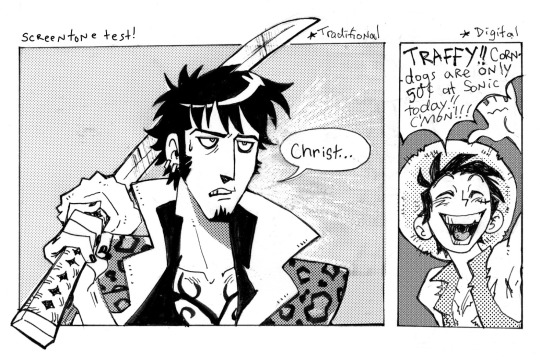
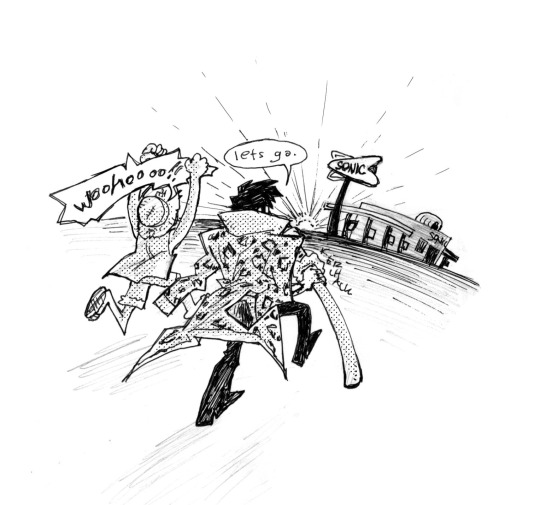

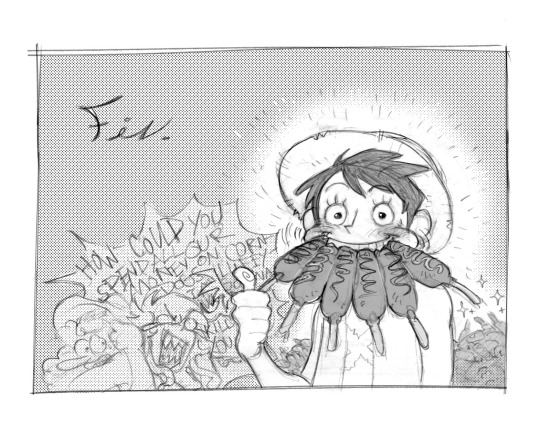
Soooo... I started reading One Piece again teehee *twirls hair* ( 6w6)
#One Piece#Please....... this is so sillay I am having sm fun haha#Monkey D Luffy#Trafalgar Law#I'm stiill only on Thriller Bark LMAO I just think Law is neat#Sanji Vinsmoke#Comic#Fanart#My Art#Traditional#Corndog comic based off of Metalocalypse cuz I have 'must reference cartoon' brain disease#Also the ENTIRE COMIC was JUST to get to the zoro punchline HSHSHSHS#(also UH you can read the first comic either direction I guess!? it was a collab w a friend just testing screentones so haha. NO PLAN DA.)#long post
4K notes
·
View notes
Text


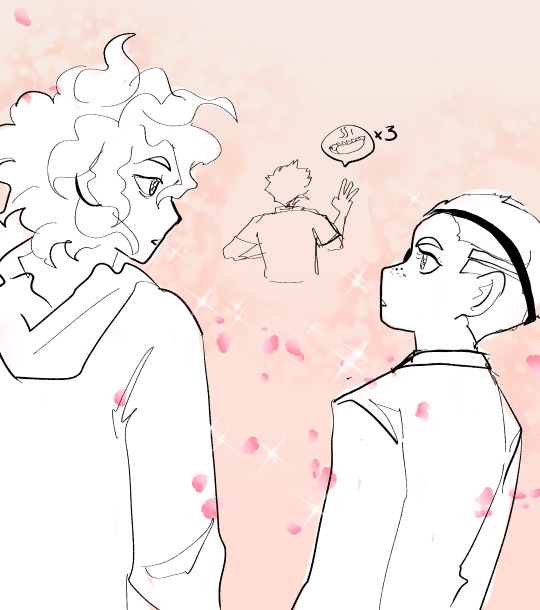
The beginning of something really excellent
(Directly inspired by this post by @cyancees )
#Hajime hinata#Fuyuhiko kuzuryu#Nagito Komaeda#Sdr2#Super danganronpa 2#An art#HOT DOG HATRED IN THIS THEATER TONIGHT#kuzukoma#Maybe even#Kuzukomahina#Or not. Just having fun#I want to smuggle a bucket of chicken wings to the theater ....#Direct homestuck reference!! I love that song it was a point of 'oh I'm gonna like this' for me
2K notes
·
View notes
Text
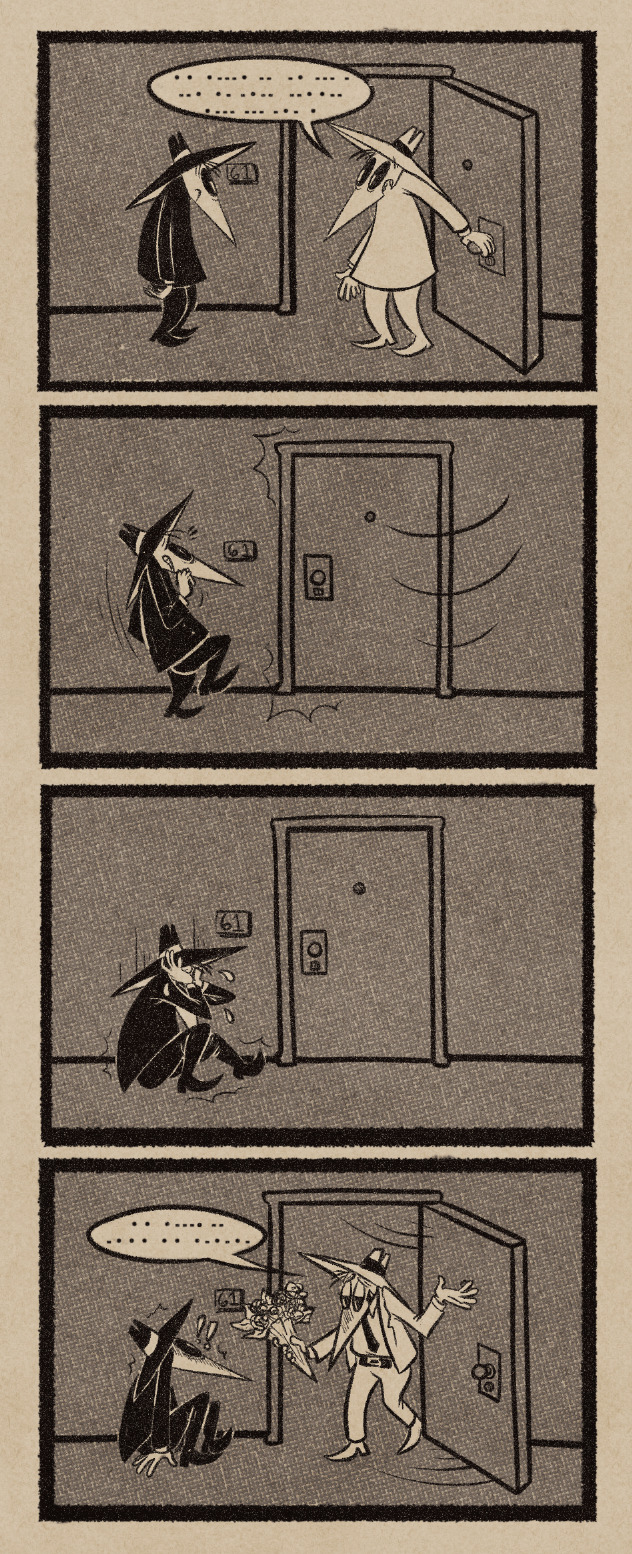
Happy Bi Visibility month, and (somewhat late) day!
#spy vs spy#black spy#white spy#spy x spy#headcanon#fun fact: i kept passing out whilst drawing this only to find more that had been inked that i couldn't remember doing#this one is a direct reference to something but i altered the ending. i'll let you all guess what it is.
341 notes
·
View notes
Text

daisy bell gives me so many fatal error vibes that i can't describe it
swap sans by popcornpr1nce fatal_error by @xedramon
#ofc based on that headcanons post tee hee#this specific comic is a bit far from what i said about the jukebox thing#so mayyyybe i'll draw more stuff about this hc i love it so much#oh and the only explanation i'm giving is what gaster flowey is saying#“pathetic” “haha”#yup sign language#the rest are direct references to the fatal comic:3#except the last 2 panels#what is fatal making is more up to interpretation#i have a specific idea but let's just say it's probably some creepy stuff that occurred to his twisted little mind#undertale#undertale au#utmv#underswap#swap sans#blueberry sans#fatal error sans#fatalberry#fluffy art
788 notes
·
View notes
Text

I love them dearly and they hurt my feelings
(bonus edit under the cut)

#everyone say thank you citrusgothic for getting eliot into x-men#nothing like a little reference drawing exercise to end the art drought on this blog and in my life#xmfc#x men first class#charles xavier#erik lehnsherr#james mcavoy#michael fassbender#charles xavier/erik lehnsherr#cherik#x men fanart#my art#just ignore the fact that they’re lit from two different directions in the second image#as citrus said they’re just standing in between lamps. studio lighting. they are getting family photos taken at J.C. Penney#professor x#magneto
198 notes
·
View notes
Note
Where do you find references or research to create all the unique patterns in your compositions and the outfits of your characters?
When I do reference, mainly books on Greek/Jewish textiles, architecture and illuminations. Books are expensive though 💀 I'll add some online resources!!
Skies of Parchment, Seas of Ink (link to scanned version)
Ceremonial Synagogue Textiles: From Ashkenazi, Sephardi, and Italian Communities
The Jewish virtual museum has some resources
This folk costume blog is a great resource for Greek regional clothing, but also folk clothing and embroidery in general. I love this blog
I do end up making a lot of patterns based on my own memories of everything I've seen, too though. Hopefully some of those resources will be helpful!
#Hyde replied#sometimes i also reference Japanese fabrics and symbolism as well though. I'm from a mixed culture family#so sometimes that works it's way in to my work too#resources#my work is very much a half and half mix of personal symbolism and specifics so a lot of it isn't direct reference
238 notes
·
View notes
Text

@stephcassweek day 2: alternate universe: vampire :)
#stephcass week#stephanie brown#steph brown#cassandra cain#cass cain#stephcass#black bat#batgirl#spoiler#dc fanart#dc comics#robin#ash's doodlings#i genuinely had so many issues with stephs face i redrew it so many times and just said fuck it#there are a lot of photos of me in my camera roll now just looking up at the same direction just to get another reference
238 notes
·
View notes